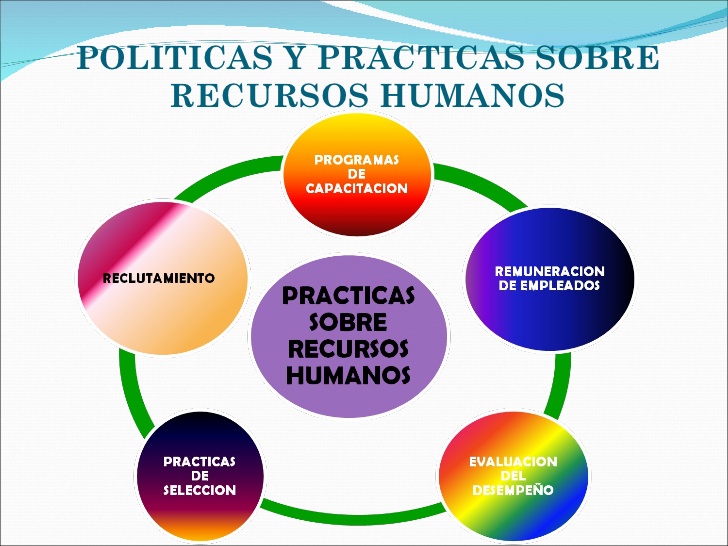outline i. general considerations a. risk factors 1. positive vs. negative 2. modifiable vs. non-modifiable b. n
Outline
I. General Considerations
A.
Risk factors
1. Positive vs. negative
2. Modifiable vs. non-modifiable
B. Nature vs. nurture
1. Hereditary factors vs. environmental exposures
2. Genetic Predisposition
3. Nutrigenomics
C. Correlation (association) vs. cause and effect
1. Epidemiology (observational; retrospective vs. prospective)
2. Animal model
3. Human testing
D. Clinical trials (interventional)
1. Randomized
2. Placebo-controlled
3. Double blind
E. Cause or consequence
F. Intensity of stimulus vs. duration of exposure
G. Positive vs. negative results
H. Genetics
1. Complex pattern of inheritance
2. Genomewide association studies
3. Pharmacogenomics
II. Obesity
A. Major public health issue in the U.S.
B. Body mass index (BMI)
1. Relationship to major systemic disease
C. Abdominal adiposity
1. WHR (waist-to-hip ratio)
2. Metabolic (inflammatory) syndrome
D. Genetics
1. Identical twins study
2. Danish adoptees study
E. Childhood obesity
F. Calories
1. Caloric intake should = caloric need
G. Weight control
1. Energy density of food
2. Low fat vs. low carb(ohydrate)
3. Glycemic index (GI)
4. Glycemic load
5. Refined (processed) vs. unrefined (unprocessed) carbohydrate
H. Weight loss diets
1. “Quick” weight loss diets
2. Weightwatchers type approach
3. Ketosis
4. Obesity pandemic
I. Food pyramid
J. Dietary recommendations for most people
III. Heart Disease
A. Genetics
B. Effects of growing prevalence of obesity and type 2 diabetes
C. Major positive risk factors amenable to preventive therapy
1. Hyperlipidemia, especially hypercholesterolemia
2. Hypertension
3. Smoking
4. Obesity
D. Dietary lipid intake
1. Effects of saturated fat intake on plasma cholesterol levels
E. American diet vs. AHA (American Heart Association) - Recommended
Diet
1. Saturated, monounsaturated and polyunsaturated fat
F. Chinese study - implications for U.S. population
G. HDL (high density lipoprotein) vs. LDL (low density lipoprotein)
1. Factors favoring lower HDL levels
2. Factors favoring higher HDL levels
3. Early feeding patterns
4. Evidence for causative role of LDL in development of
atherosclerosis
a) Experimental
b) Epidemiological
c) Genetic
d) Clinical trials
H. Physicians' Health Study
1. Effect of beta-carotene
I. Physicians' Health Study II
1. Effect of vitamins E and C
J. Folic acid and homocysteine
1. High levels of homocysteine associated with greater risk of heart
attack
2. Folic acid reduces homocysteine levels in blood
3. 4 independent studies – high homocysteine levels not causative but,
rather, are a consequence of disease
K. Trans fatty acids
1. Increase LDL levels
2. May also decrease HDL
3. Calorie distracter
L. Omega-3 (n-3) fatty acids
1. Lower plasma triglycerides
2. Lowering of plasma cholesterol levels does not appear to be
significant
M. To drink or not to drink?
N. C-reactive protein
1. Marker of inflammation
2. Levels elevated in persons at risk for cardiovascular events
3. Statins lower levels
4. How good a predictor of cardiovascular problems?
5. Cause vs. consequence
O. Physicians’ Health Study
1. Evaluate protective association between six modifiable lifestyle
factors and heart failure – normal weight, not smoking, regular
exercise, moderate alcohol intake, consumption of breakfast cereal,
consumption of fruits and vegetables
IV. Hypertension
A. Positive risk factors
1. Overweight
a) Body weight strongly correlates with blood pressure in all
populations
2. High salt (sodium) intake
a) Societies ingesting low levels of sodium show little hypertension
b) Societies ingesting high levels of sodium show high prevalence of
hypertension
3. High alcohol intake
B. Characteristics of populations where hypertension is absent
1. Traditional societies (unacculturated)
2. No weight increase with age
3. Diets low in sodium
C. Hypertension Detection and Follow-up Program
1. Mild high blood pressure (diastolic 90-104)
2. Stepped (more aggressive) vs. Referred (behavior modification) Care
3. Significantly better results for Stepped Care group
D. Working hypothesis
1. There are two groups, one of whom is genetically susceptible and
one of whom
is genetically resistant
E. "Upward tracking" phenomenon
1. Tendency toward rising blood pressure may appear in early childhood
F. Weight increase as sole variable
G. Sodium intake as sole variable
H. Sodium (Na) restriction vs. calcium (Ca) supplementation
1. The Trials of Hypertension Prevention (THOP) II
2. Dietary Approach to Stop Hypertension (DASH) Study
3. National Health and Nutrition Examination Survey (NHANES) I
I. Nurses’ Health Study
1. Examine association between six modifiable diet and lifestyle
factors and development of hypertension – BMI < 25, daily vigorous
exercise, DASH-style diet, modest alcohol intake, non-narcotic
analgesic use < once per week, 400 μg/day or > of supplemental folic
acid.
V. Diabetes
A. Type 1 (insulin dependent) vs. type 2 (noninsulin dependent)
1. Type 2
a) Affects about 24 million Americans
b) Disproportionately affects nonwhites
c) Genetic predisposition in 25-30% of Americans
d) Nearly three times as likely in overweight individuals
e) Insulin resistance
B. Diabetic complications
1. Atherosclerosis
2. Microvascular disease
3. Diabetic neuropathy
C. Nutritional management
1. Until recently
a) Low fat, high carbohydrate diet
b) 55-60% of calories from carbohydrate, 15-20% from protein, less
than 30%
from fat
2. More recently
a) Diet high in monounsaturated fat, low in carbohydrate
b) 15% from protein, 45% from fat (25% monounsaturates, 10% saturated,
10%
polyunsaturated), 40% from carbohydrate
D. Management of mild to moderately severe type II diabetic
1. Individualized dietary approach
2. Reduction of saturated fat and cholesterol
3. Caloric control to achieve ideal weight
4. Increase fiber
5. Physical activity
E. Epidemiologic studies
1. The higher the average body weight of the population, the greater
the
prevalence of diabetes
2. Dietary manipulation, not insulin, is treatment of choice
F. Risk factors for atherosclerosis in diabetes
1. Hyperglycemia
G. ACCORD (Action to Control Cardiovascular Risk in Diabetes) Study
1. Very intensive therapy to lower blood glucose levels
H. Studies on migrant populations
1. Dietary saturated fat
I. Exercise
J. Dietary fiber
6
 PRIRUČNIK BHAKTIVEDANTA COACHINGA STRANA 22 BHAKTIVEDANTA COACHING
PRIRUČNIK BHAKTIVEDANTA COACHINGA STRANA 22 BHAKTIVEDANTA COACHING  ESTATÍSTICA E DISTRIBUIÇÃO AMOSTRAL A ESTATÍSTICA SE INTERESSA POR
ESTATÍSTICA E DISTRIBUIÇÃO AMOSTRAL A ESTATÍSTICA SE INTERESSA POR FEDERACIÓN RIOJANA DE GOLF C MONCALVILLO 2 26007 LOGROÑO
FEDERACIÓN RIOJANA DE GOLF C MONCALVILLO 2 26007 LOGROÑO ANEXA NR 5 LA ORDINUL MINISTERULUI ECONOMIEI ŞI INFRASTRUCTURII
ANEXA NR 5 LA ORDINUL MINISTERULUI ECONOMIEI ŞI INFRASTRUCTURII PROGRAMMABOEKJE MIDDAGSYMPOSIUM TOEKOMST VAN DE GREN(SZ)INFO “VERDUURZAMING VAN DE
PROGRAMMABOEKJE MIDDAGSYMPOSIUM TOEKOMST VAN DE GREN(SZ)INFO “VERDUURZAMING VAN DE RECORDS MANAGEMENT POLICY VERSION 10 APPROVED BY IGSG DATE
RECORDS MANAGEMENT POLICY VERSION 10 APPROVED BY IGSG DATE D OCTOR OF PHILOSOPHY IN PHYSICS DISSERTATION DEFENSE FORM
D OCTOR OF PHILOSOPHY IN PHYSICS DISSERTATION DEFENSE FORM GESTIÓN DE RRHH ENUNCIADO JUAN ES EL PROPIETARIO DE
GESTIÓN DE RRHH ENUNCIADO JUAN ES EL PROPIETARIO DE CRUZ ROJA MEXICANA PROYECTO DE RECAUDACIÓN DE FONDOS
CRUZ ROJA MEXICANA PROYECTO DE RECAUDACIÓN DE FONDOS  PERSONAL DATA FORM LEVEL II FIELDWORK PERSONAL INFORMATION NAME
PERSONAL DATA FORM LEVEL II FIELDWORK PERSONAL INFORMATION NAME